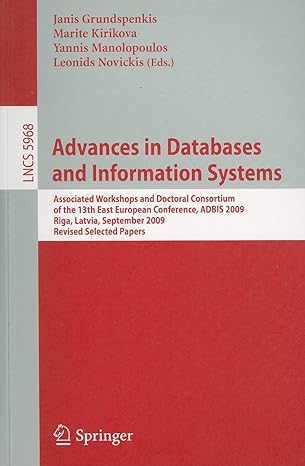Question
JAVA: I need help with the following program. ************************ IntBTNode.java ********************************** // File: IntBTNode.java from the package edu.colorado.nodes // Complete documentation is available from the
JAVA: I need help with the following program.
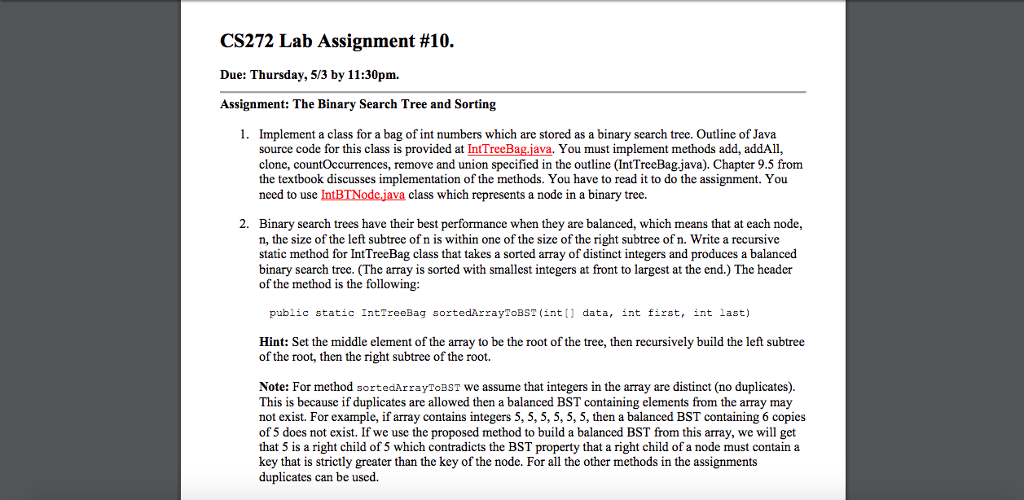
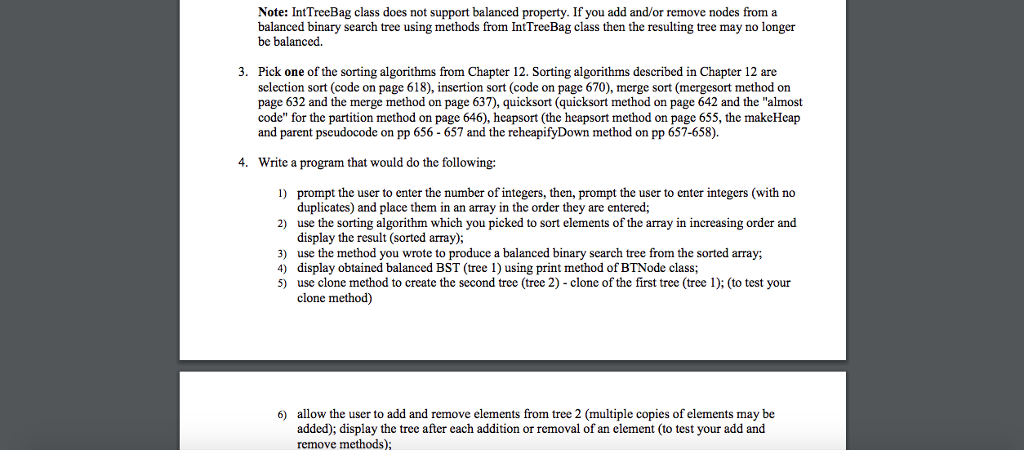
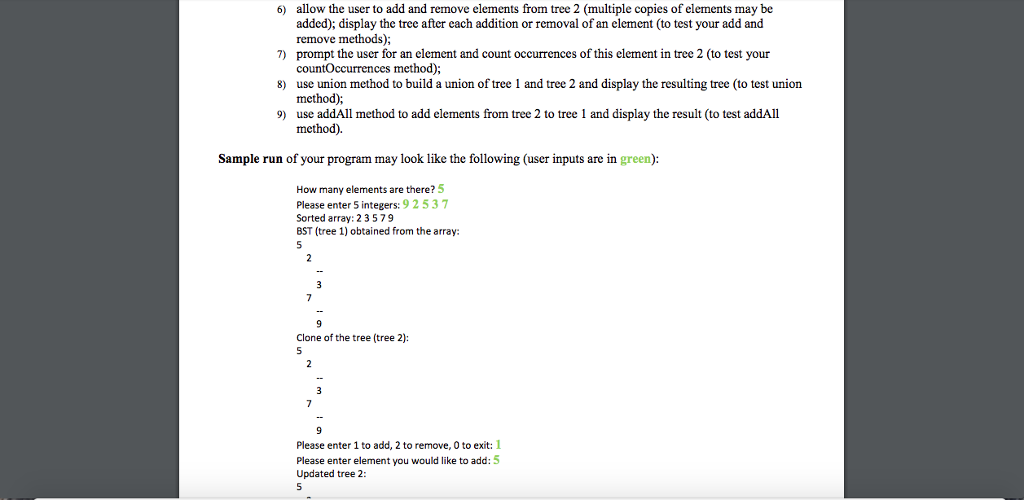
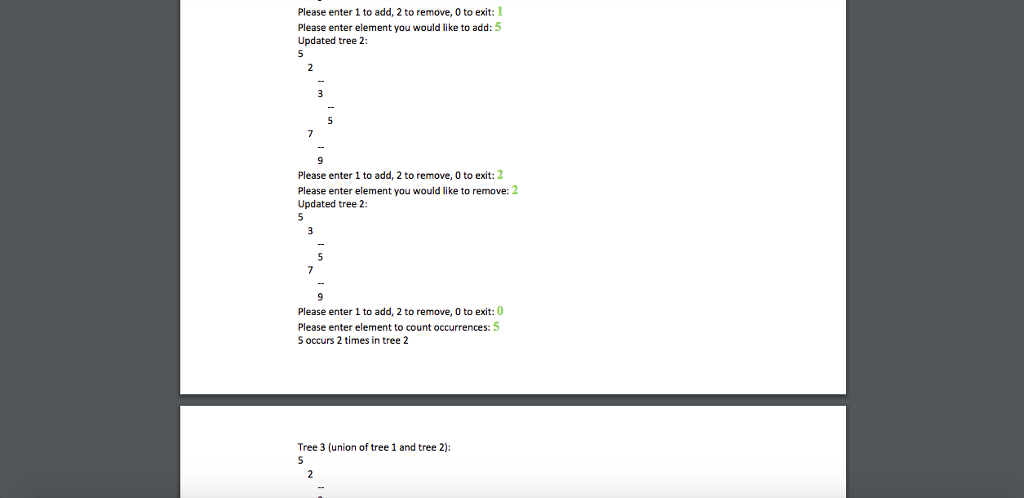
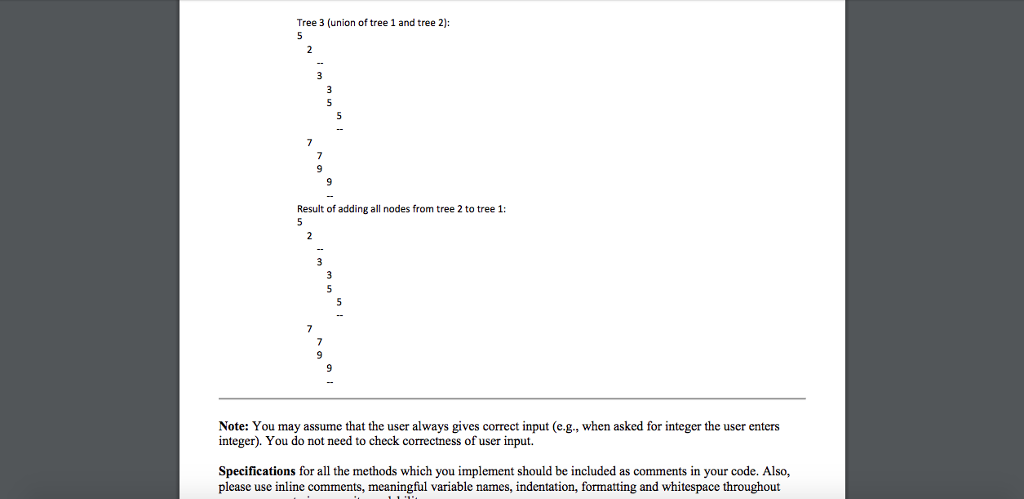
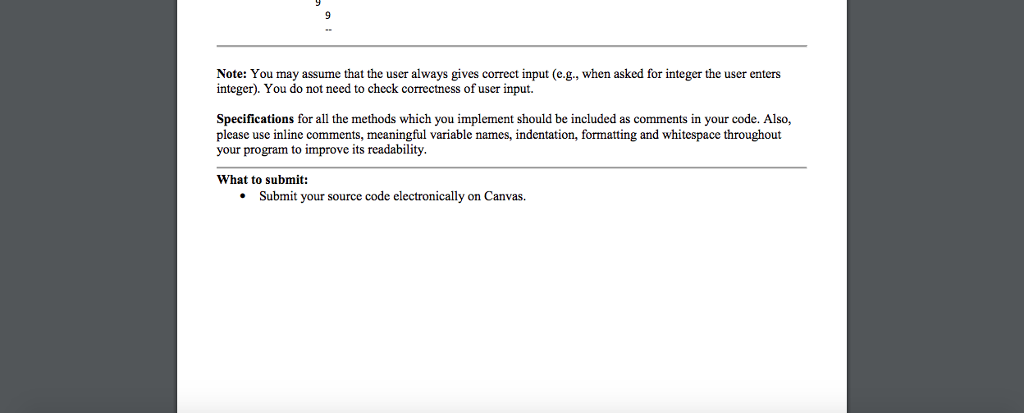
************************ IntBTNode.java **********************************
// File: IntBTNode.java from the package edu.colorado.nodes
// Complete documentation is available from the IntBTNode link in:
// http://www.cs.colorado.edu/~main/docs
//package edu.colorado.nodes;
/*************************************************************************
*****
* A IntBTNode provides a node for a binary tree. Each node
* contains a piece of data (which is a reference to an object) and
references
* to a left and right child. The references to children may be null to
indicate
* that there is no child. The reference stored in a node can also be
null.
*
*
- Limitations:
-
* Beyond
Int.MAX_VALUEelements,treeSize, is* wrong.
*
*
- Java Source Code for this class:
-
*
* http://www.cs.colorado.edu/~main/edu/coloradoodes/IntBTNode.java
*
* @author Michael Main
* (main@colorado.edu)
*
* @version
* Jun 12, 1998
*
* @see BTNode
* @see BooleanBTNode
* @see ByteBTNode
* @see CharBTNode
* @see DoubleBTNode
* @see FloatBTNode
* @see LongBTNode
* @see ShortBTNode
**************************************************************************
****/
public class IntBTNode
{
// Invariant of the IntBTNode class:
// 1. Each node has one integer, stored in the instance
// variable data.
// 2. The instance variables left and right are references to the
node's
// left and right children.
private int data;
private IntBTNode left, right;
/**
* Initialize a
IntBTNodewith a specified initial dataand links
* children. Note that a child link may be the null reference,
* which indicates that the new node does not have that child.
* @param
initialData* the initial data of this new node
* @param
initialLeft* a reference to the left child of this new node--this reference may
be null
* to indicate that there is no node after this new node.
* @param
initialRight* a reference to the right child of this new node--this reference may
be null
* to indicate that there is no node after this new node.
*
- Postcondition:
-
* This node contains the specified data and links to its children.
**/
public IntBTNode(int initialData, IntBTNode initialLeft, IntBTNode
initialRight)
{
data = initialData;
left = initialLeft;
right = initialRight;
}
/**
* Accessor method to get the data from this node.
* @param - none
* @return
* the data from this node
**/
public int getData( )
{
return data;
}
/**
* Accessor method to get a reference to the left child of this node.
* @param - none
* @return
* a reference to the left child of this node (or the null reference if
there
* is no left child)
**/
public IntBTNode getLeft( )
{
return left;
}
/**
* Accessor method to get the data from the leftmost node of the tree
below
* this node.
* @param - none
* @return
* the data from the deepest node that can be reached from this node by
* following left links.
**/
public int getLeftmostData( )
{
if (left == null)
return data;
else
return left.getLeftmostData( );
}
/**
* Accessor method to get the data from the rightmost node of the tree
below
* this node.
* @param - none
* @return
* the data from the deepest node that can be reached from this node by
* following right links.
**/
public int getRightmostData( )
{
if (right == null)
return data;
else
return right.getRightmostData( );
}
/**
* Accessor method to get a reference to the right child of this node.
* @param - none
* @return
* a reference to the right child of this node (or the null reference
if there
* is no right child)
**/
public IntBTNode getRight( )
{
return right;
}
/**
* Uses an inorder traversal to print the data from each node at or
below
* this node of the binary tree.
* @param - none
*
- Postcondition:
-
* The data of this node and all its descendants have been writeen by
*
System.out.println( )using an inorder traversal.**/
public void inorderPrint( )
{
if (left != null)
left.inorderPrint( );
System.out.println(data);
if (right != null)
right.inorderPrint( );
}
/**
* Accessor method to determine whether a node is a leaf.
* @param - none
* @return
*
true(if this node is a leaf) or*
false(if this node is not a leaf.**/
public boolean isLeaf( )
{
return (left == null) && (right == null);
}
/**
* Uses a preorder traversal to print the data from each node at or
below
* this node of the binary tree.
* @param - none
*
- Postcondition:
-
* The data of this node and all its descendants have been writeen by
*
System.out.println( )using a preorder traversal.**/
public void preorderPrint( )
{
System.out.println(data);
if (left != null)
left.preorderPrint( );
if (right != null)
right.preorderPrint( );
}
/**
* Uses a postorder traversal to print the data from each node at or
below
* this node of the binary tree.
* @param - none
*
- Postcondition:
-
* The data of this node and all its descendants have been writeen by
*
System.out.println( )using a postorder traversal.**/
public void postorderPrint( )
{
if (left != null)
left.postorderPrint( );
if (right != null)
right.postorderPrint( );
System.out.println(data);
}
/**
* Uses an inorder traversal to print the data from each node at or
below
* this node of the binary tree, with indentations to indicate the
depth
* of each node.
* @param
depth* the depth of this node (with 0 for root, 1 for the root's
* children, and so on)(
*
- Precondition:
-
*
depthis the depth of this node.*
- Postcondition:
-
* The data of this node and all its descendants have been writeen by
*
System.out.println( )using an inorder traversal.* The indentation of each line of data is four times its depth in the
* tree. A dash "--" is printed at any place where a child has no
* sibling.
**/
public void print(int depth)
{
int i;
// Print the indentation and the data from the current node:
for (i = 1; i
System.out.print(" ");
System.out.println(data);
// Print the left subtree (or a dash if there is a right child and
no left child)
if (left != null)
left.print(depth+1);
else if (right != null)
{
for (i = 1; i
System.out.print(" ");
System.out.println("--");
}
// Print the right subtree (or a dash if there is a left child and
no left child)
if (right != null)
right.print(depth+1);
else if (left != null)
{
for (i = 1; i
System.out.print(" ");
System.out.println("--");
}
}
/**
* Remove the leftmost most node of the tree below this node.
* @param - none
*
- Postcondition:
-
* The tree starting at this node has had its leftmost node removed
(i.e.,
* the deepest node that can be reached by following left links). The
* return value is a reference to the root of the new (smaller) tree.
* This return value could be null if the original tree had only one
* node (since that one node has now been removed).
**/
public IntBTNode removeLeftmost( )
{
if (left == null)
return right;
else
{
left = left.removeLeftmost( );
return this;
}
}
/**
* Remove the rightmost most node of the tree below this node.
* @param - none
*
- Postcondition:
-
* The tree starting at this node has had its rightmost node removed
(i.e.,
* the deepest node that can be reached by following right links). The
* return value is a reference to the root of the new (smaller) tree.
* This return value could be null if the original tree had only one
* node (since that one node has now been removed).
**/
public IntBTNode removeRightmost( )
{
if (right == null)
return left;
else
{
right = right.removeRightmost();
return this;
}
}
/**
* Modification method to set the data in this node.
* @param
newData* the new data to place in this node
*
- Postcondition:
-
* The data of this node has been set to
newData.**/
public void setData(int newData)
{
data = newData;
}
/**
* Modification method to set the link to the left child of this node.
* @param
newLeft* a reference to the node that should appear as the left child of this
node
* (or the null reference if there is no left child for this node)
*
- Postcondition:
-
* The link to the left child of this node has been set to
newLeft.* Any other node (that used to be the left child) is no longer
connected to
* this node.
**/
public void setLeft(IntBTNode newLeft)
{
left = newLeft;
}
/**
* Modification method to set the link to the right child of this node.
* @param
newLeft* a reference to the node that should appear as the right child of
this node
* (or the null reference if there is no right child for this node)
*
- Postcondition:
-
* The link to the right child of this node has been set to
newRight.* Any other node (that used to be the right child) is no longer
connected to
* this node.
**/
public void setRight(IntBTNode newRight)
{
right = newRight;
}
/**
* Copy a binary tree.
* @param
source* a reference to the root of a binary tree that will be copied (which
may be
* an empty tree where
sourceis null)* @return
* The method has made a copy of the binary tree starting at
*
source. The return value is a reference to the root ofthe copy.
* @exception OutOfMemoryError
* Indicates that there is insufficient memory for the new tree.
**/
public static IntBTNode treeCopy(IntBTNode source)
{
IntBTNode leftCopy, rightCopy;
if (source == null)
return null;
else
{
leftCopy = treeCopy(source.left);
rightCopy = treeCopy(source.right);
return new IntBTNode(source.data, leftCopy, rightCopy);
}
}
/**
* Count the number of nodes in a binary tree.
* @param
root* a reference to the root of a binary tree (which may be
* an empty tree where
sourceis null)* @return
* the number of nodes in the binary tree
*
- Note:
-
* A wrong answer occurs for trees larger than
*
INT.MAX_VALUE.**/
public static int treeSize(IntBTNode root)
{
if (root == null)
return 0;
else
return 1 + treeSize(root.left) + treeSize(root.right);
}
}
************************* IntTreeBag.java *********************************************
// File: IntTreeBag.java from the package edu.colorado.collections
// The implementation of most methods in this file is left as a student
// exercise from Section 9.5 of "Data Structures and Other Objects Using
Java"
//import edu.colorado.nodes.IntBTNode;
/*************************************************************************
*****
* This class is a homework assignment;
* An
IntTreeBagis a collection of int numbers.*
*
- Limitations:
-
* Beyond
Integer.MAX_VALUEelements,countOccurrences,* and
sizeare wrong.*
*
- Outline of Java Source Code for this class:
-
*
* http://www.cs.colorado.edu/~main/edu/colorado/collections/IntTreeBag.ja
va
*
*
*
- Note:
-
* This file contains only blank implementations ("stubs")
* because this is a Programming Project for my students.
*
* @version
* Jan 24, 1999
*
* @see IntArrayBag
* @see IntLinkedBag
**************************************************************************
****/
public class IntTreeBag implements Cloneable
{
// Invariant of the IntTreeBag class:
// 1. The elements in the bag are stored in a binary search tree.
// 2. The instance variable root is a reference to the root of the
// binary search tree (or null for an empty tree).
private IntBTNode root;
/**
* Insert a new element into this bag.
* @param
element* the new element that is being inserted
*
- Postcondition:
-
* A new copy of the element has been added to this bag.
* @exception OutOfMemoryError
* Indicates insufficient memory a new IntBTNode.
**/
public void add(int element)
{
// Implemented by student.
}
/**
* Add the contents of another bag to this bag.
* @param
addend* a bag whose contents will be added to this bag
*
- Precondition:
-
* The parameter,
addend, is not null.*
- Postcondition:
-
* The elements from
addendhave been added to this bag.* @exception IllegalArgumentException
* Indicates that
addendis null.* @exception OutOfMemoryError
* Indicates insufficient memory to increase the size of the bag.
**/
public void addAll(IntTreeBag addend)
{
// Implemented by student.
}
/**
* Generate a copy of this bag.
* @param - none
* @return
* The return value is a copy of this bag. Subsequent changes to the
* copy will not affect the original, nor vice versa.
* @exception OutOfMemoryError
* Indicates insufficient memory for creating the clone.
**/
public IntTreeBag clone( )
{ // Clone an IntTreeBag object.
// Student will replace this return statement with their own code:
return null;
}
/**
* Accessor method to count the number of occurrences of a particular
element
* in this bag.
* @param
target* the element that needs to be counted
* @return
* the number of times that
targetoccurs in this bag**/
public int countOccurrences(int target)
{
// Student will replace this return statement with their own code:
return 0;
}
/**
* Remove one copy of a specified element from this bag.
* @param
target* the element to remove from the bag
*
- Postcondition:
-
* If
targetwas found in the bag, then one copy of*
targethas been removed and the method returns true.* Otherwise the bag remains unchanged and the method returns false.
**/
public boolean remove(int target)
{
// Student will replace this return statement with their own code:
return false;
}
/**
* Determine the number of elements in this bag.
* @param - none
* @return
* the number of elements in this bag
**/
public int size( )
{
return IntBTNode.treeSize(root);
}
/**
* Create a new bag that contains all the elements from two other bags.
* @param
b1* the first of two bags
* @param
b2* the second of two bags
*
- Precondition:
-
* Neither b1 nor b2 is null.
* @return
* the union of b1 and b2
* @exception IllegalArgumentException
* Indicates that one of the arguments is null.
* @exception OutOfMemoryError
* Indicates insufficient memory for the new bag.
**/
public static IntTreeBag union(IntTreeBag b1, IntTreeBag b2)
{
// Student will replace this return statement with their own code:
return null;
}
}
Step by Step Solution
There are 3 Steps involved in it
Step: 1

Get Instant Access to Expert-Tailored Solutions
See step-by-step solutions with expert insights and AI powered tools for academic success
Step: 2

Step: 3

Ace Your Homework with AI
Get the answers you need in no time with our AI-driven, step-by-step assistance
Get Started


